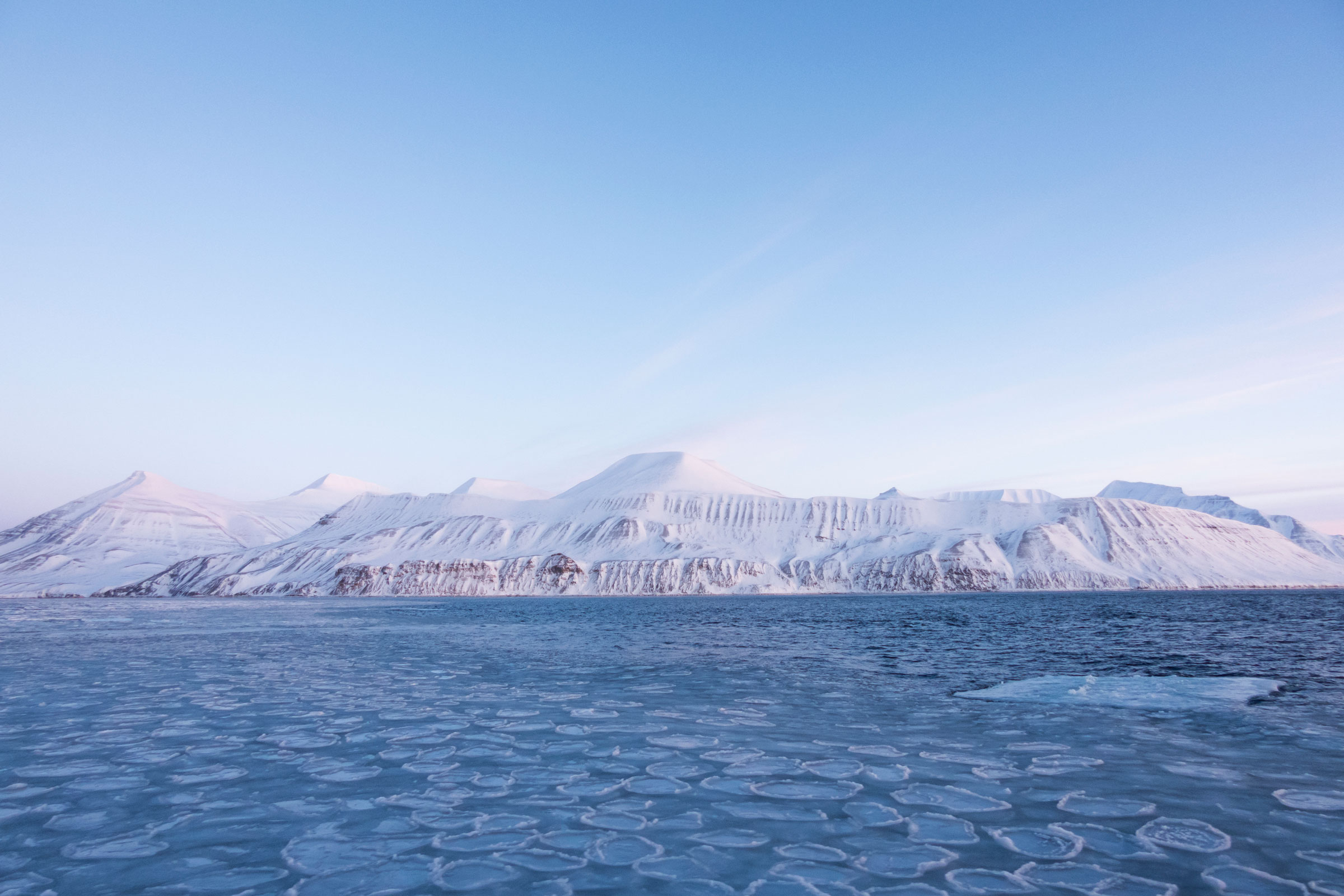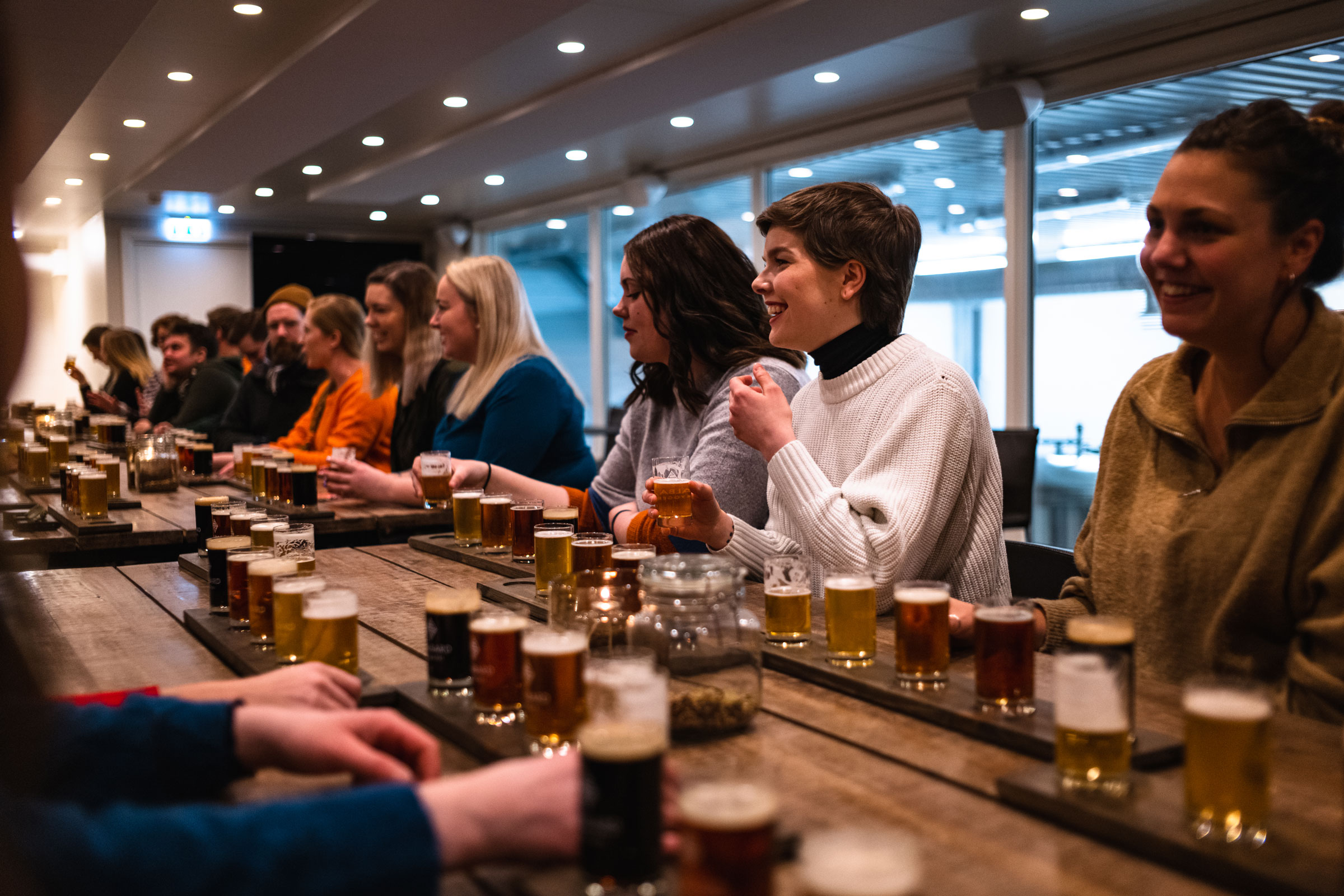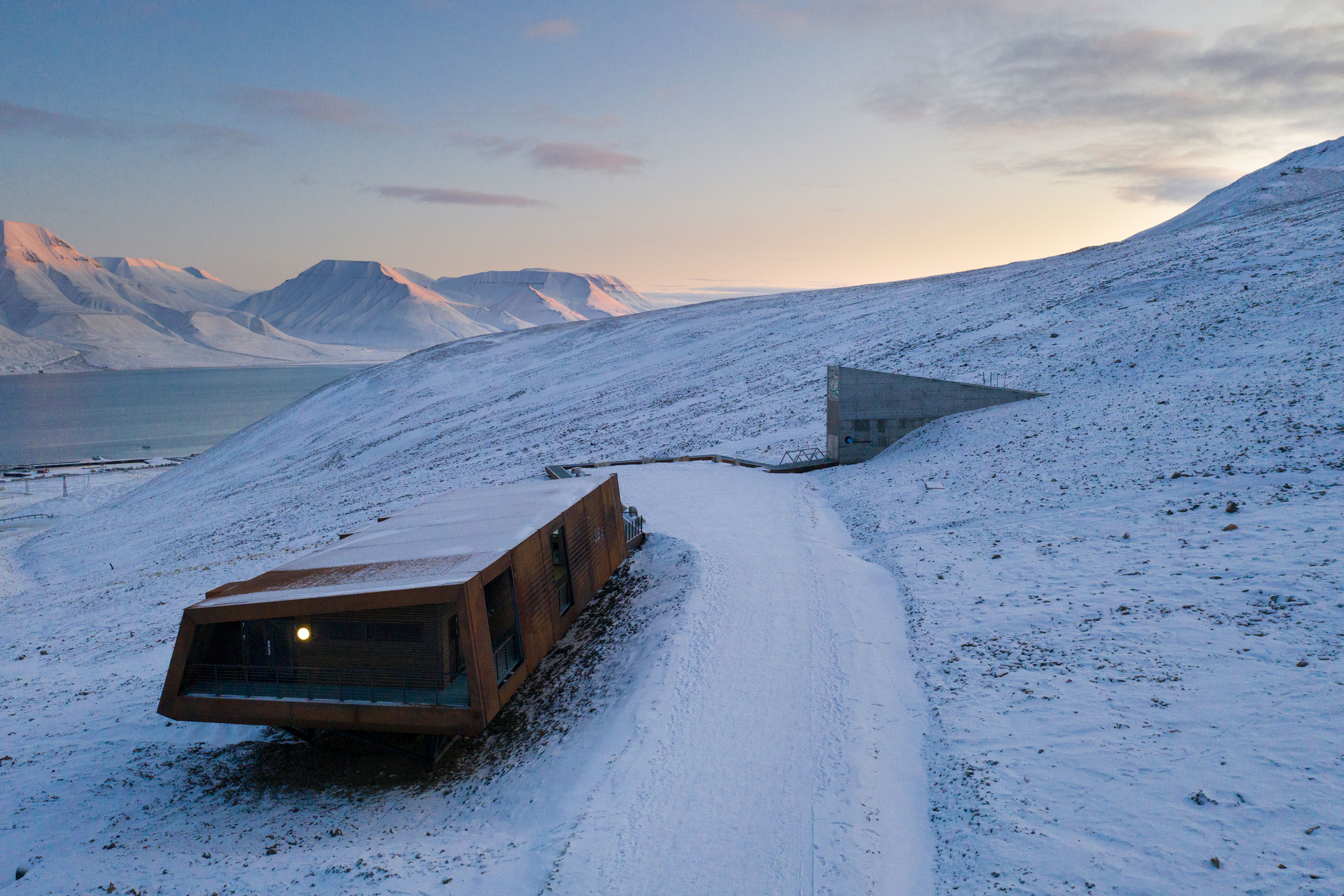Story at a glance:
- Svalbard is a Norwegian archipelago about halfway between the northern coast of Norway and the North Pole.
- The main settlement of Longyearbyen is the northernmost town in the world—and the fastest warming, too, with increased risk of avalanche.
- Tourism continues to evolve on the islands, as locals and visitors alike reconcile how to tell important stories while protecting the land.
Svalbard is a beautiful, strange, perhaps calamitous contradiction; I both desperately want to see it, to be on an open-air boat on the way to its glaciers, but I also want to keep it secret. Not because I want to keep it to myself, but because I’m afraid for it.
The effects of climate change have been clearer there than perhaps anywhere else. This group of Norwegian islands about halfway between the northern coast of Norway and the North Pole is home to Longyearbyen—the northernmost town in the world. But it’s the fastest warming place in the world, too.
Real-Time Effects of Climate Change
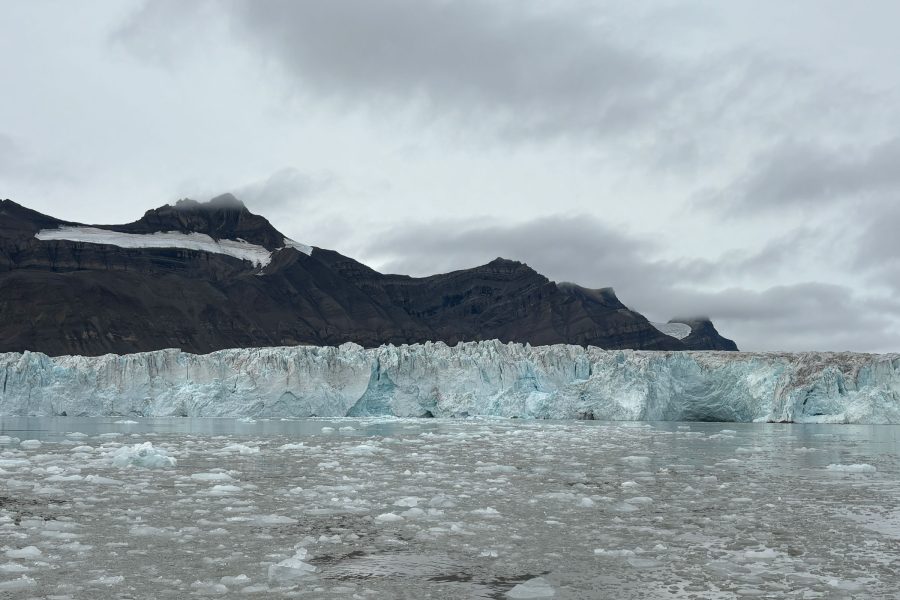
Travel company Svalbard Adventures offers excursions like boat trips and snowmobile tours. Photo by Laura Rote
“In the Arctic we can see the effects of climate change firsthand, year after year. We’re witnessing significant changes in weather patterns, vegetation, glaciers, and wildlife,” says Benedicte Klyve, marketing manager at Svalbard Adventures, an ecotourism company on Svalbard that offers everything from boat trips and hiking excursions to dog sledding and snowmobiling—all through an educational lens.
On a boat tour in September, one Svalbard Adventures guide recounts how she’s seen the glaciers change right before her eyes. She says surging glaciers are usually due to pressure, as so much snow falls on top of them. “But now they’re finding that there’s a new type of surging glacier, and it’s most likely linked to climate change,” says Taygen Hughes, a seasonal employee from New Zealand.
Summers and winters alike in Svalbard are warmer and rainier than usual for this “Arctic desert.” With more sun hitting the glaciers, there is also more calving—when large chunks of ice break off the end of a glacier, sending a big splash and sound echoing across the ocean.
A glaciologist recently told Hughes that if all of Svalbard’s glaciers suddenly melted, global sea level would rise a couple of centimeters. Not too bad, she says, but Svalbard is tiny compared to neighboring Greenland, whose own ice melt would cause a lot of trouble. As for Antarctica’s rapidly melting glaciers, that’s a major fear for many. “Obviously that isn’t going to happen overnight, but it is pretty alarming if you look at the rates that all of the glaciers are melting up here in the Arctic,” Hughes says just moments after the Sveabreen glacier calved in front of us. “It is melting a lot faster here on Svalbard. A lot of other Arctic regions are looking to Svalbard to see what’s coming for them.”
It is melting a lot faster here on Svalbard. A lot of other Arctic regions are looking to Svalbard to see what’s coming for them.
Another tour company, Basecamp Explorer, offers similar excursions, including a journey to Isfjord Radio Adventure Hotel—a remote outpost accessible only by boat in summer and dog sled or snowmobile by winter. “From year to year it’s really remarkable. I can tell the glaciers have moved two, three, four meters,” says Cecilie Feen, sales and marketing manager at Basecamp Explorer.
There’s no hiding climate change when you’re out in nature. Feen says the signs are everywhere. “That’s something we want to tell our guests—what you’re doing at home has an impact in the Arctic.”
The Allure of the Arctic
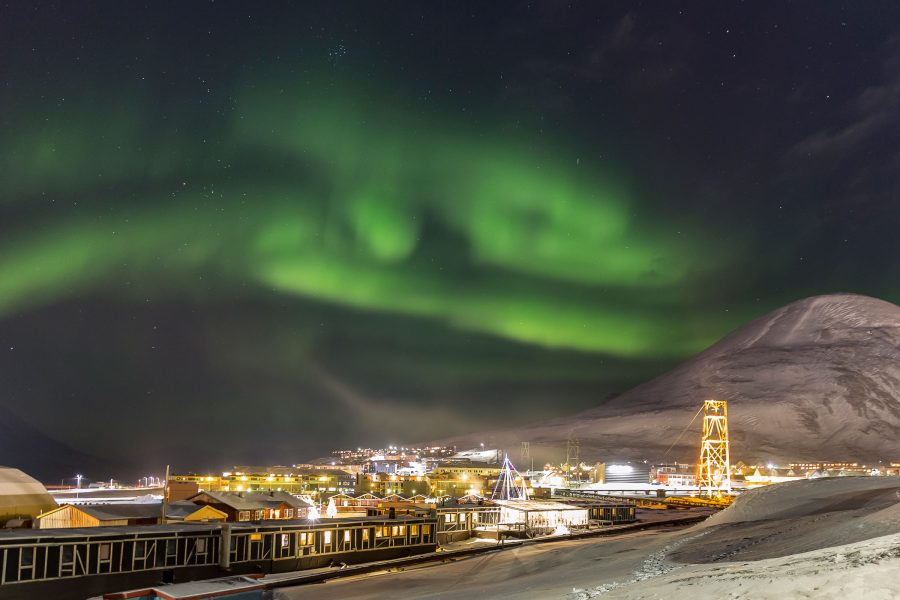
Photo by Sophie Cordon, Visit Svalbard
People of all backgrounds from all over the world (50 different countries at last count) live in Longyearbyen today. Many come from mainland Norway, having fallen in love with the otherworldly nature, the wildlife, the Northern Lights, even the snowmobiling—but many also arrive from Thailand, Russia, Ukraine, and elsewhere for work or to try another way of living. Anyone can live and work in Svalbard regardless of where they’re from; no one is required to have a visa or residence permit.
“The community in Svalbard has a deep love for this place we call home, and visitors often come to share that same affection,” Klyve says. “By fostering this connection we hope it inspires our guests to reflect on how their environmental choices back home have an impact, not only in Svalbard but on the rest of the planet. Climate change is most visible in polar regions, making this connection important.”
Ronny Brunvoll, CEO of Visit Svalbard, has seen tourism evolve over the past 10 years and says it’s a delicate balance. “There’s been a major development in volume,” he says, noting that the settlement managed to increase volume without increasing the number of beds more than 20%. They did so by doubling the amount of visitors to create nearly year-round tourism. “Now we’ve got a full season from February to September, where it previously was March and April, then nothing, then half of June to half of August, and then more or less closed for four to six months.”
Limiting the number of visitors on Svalbard is important both to protect the integrity of the land as well as preserve the feeling of being somewhere special. Tourists mingle with seasonal workers at the bar, while photographers strike up conversation with locals along walking paths. It’s both peaceful and bustling in September when I’m there. You can get a seat at most restaurants easily, and strangers don’t stay way long, as people seem eager to share what brought them there. There’s a feeling of connectedness.
“We’ve gradually grown what sustainability means—not only caretaking of nature and cultural heritage, but also caretaking and coexistence with the local society. The tourism sector shares it with the locals; locals have the priority obviously, but we have to find a good balance,” Brunvoll says.
Controlling Crowds
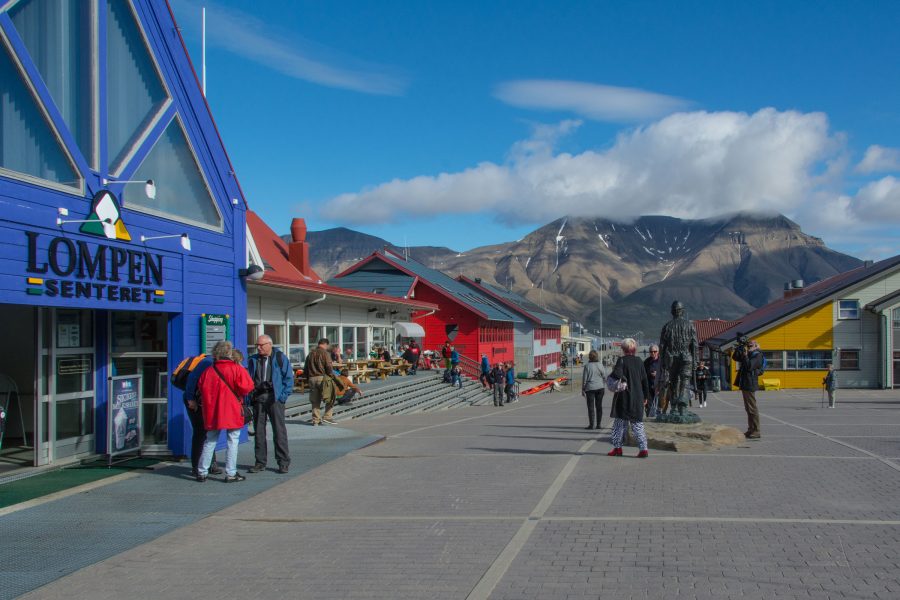
Longyearbyen is the northernmost town in the world. Photo by Jarle Rosseland
The number of visitors, length of stay, where they stay, and what they do all have a direct impact on Svalbard. The number of people coming in by cruise ship was a huge issue until recently, when strict cruise rules were set to limit the number of people coming in for a short amount of time—sometimes as short as a day. Brunvoll and others in the industry are working to emphasize extended stays. “That is the only efficient way,” he says, adding that the average guest stays 4.5 days. “How do we increase that to 6 or 7?”
Beginning Jan. 1, 2025, ships will be limited to a maximum of 200 passengers in all protected areas on Svalbard. The number of cruise passengers allowed onshore at any single time at select sites is no more than 39, with one guide for every 12 passengers required.
“Climate change together with increased activity has resulted in a great pressure on the vulnerable arctic wildlife and nature in Svalbard. We are now tightening the environmental regulations in Svalbard to strengthen the protection of flora and fauna,” the Norwegian minister of climate and environment, Andreas Bjelland Eriksen, told authorities and media.
The consequences for the world will be disastrous if people stop traveling.
Many say it’s a move in the right direction. “The biggest footprint is from the flight—getting here—or from the cruise ship,” Brunvoll says. Of course, working in tourism, he still wants people to visit, and he sees great value in people exploring other places—both socially, to understand one another, and economically. “The consequences for the world will be disastrous if people stop traveling,” he says.
Tourism is admittedly part of what makes the place special, according to Hege Giske, COO of Svalbard Brewery. She moved from mainland Norway to Svalbard in 2018. “If we didn’t have tourism, we wouldn’t have such great culinary offerings,” she says. On the contrary, visitors and locals alike can enjoy a number of fine or casual dining experiences, cocktail bars, the brewery, and frequent special events—from the annual blues festival to a literature festival to food events and even the world’s northernmost Pride.
Building Community
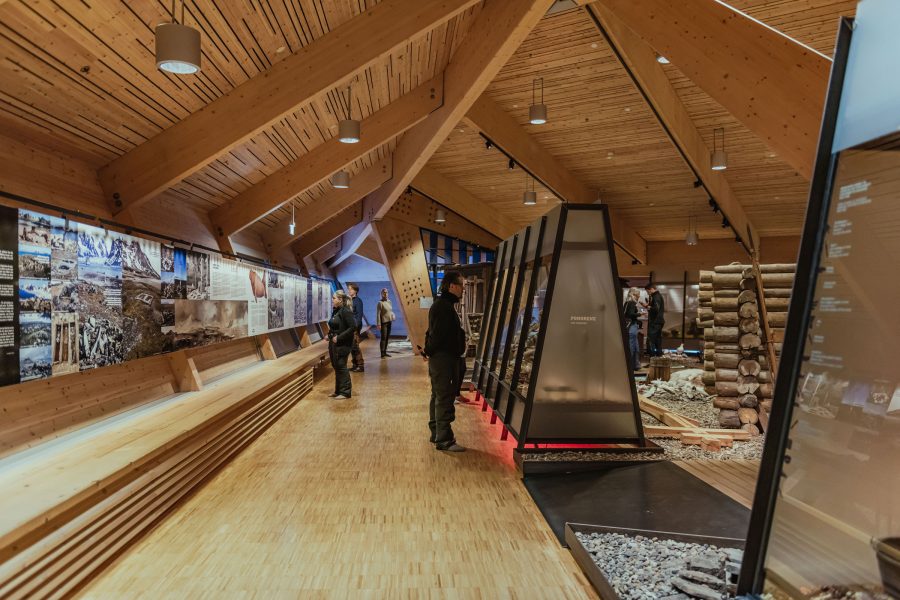
The Svalbard Museum is a popular spot for visitors and locals alike. Like most public places in Longyearbyen, patrons are required to take off their shoes and walk in socks or a pair of provided slippers once inside. Photo by Ragnhild Utne
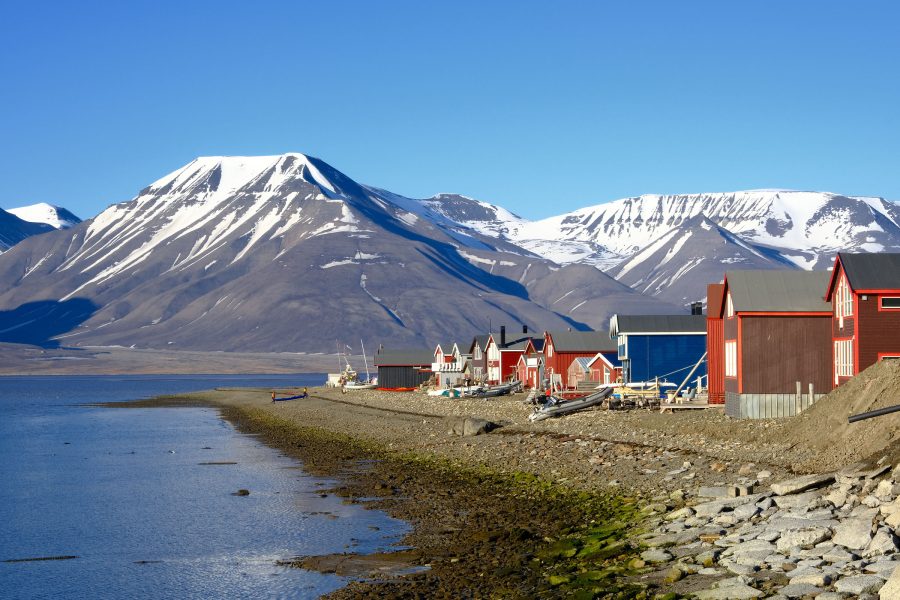
Photo by Haakon Daae Brensholm, Visit Svalbard
A special kind of determination is required of people who live on Svalbard, Giske says. She remembers when she quit her job on the mainland and decided to make the move after her husband got a job and was settled in Longyearbyen. “I thought, ‘OK. I’m going to do it. I’m going to do something crazy and get some special experience before I get too old,’” she says. “The people who live here are so willing to participate, so willing to be a part of the society.”
What is learned from living in such a remote place is very much centered around community and not giving up, Giske says. “When you live with this kind of nature you can’t say, ‘Stop. I can’t do it.’ You just have to keep going. You may get your snowmobile stuck and you can’t call anyone; you just have to keep moving,” she says. “You have to take one step at a time to get where you want to go, and that does something with the whole society.”
Preparing for Disasters
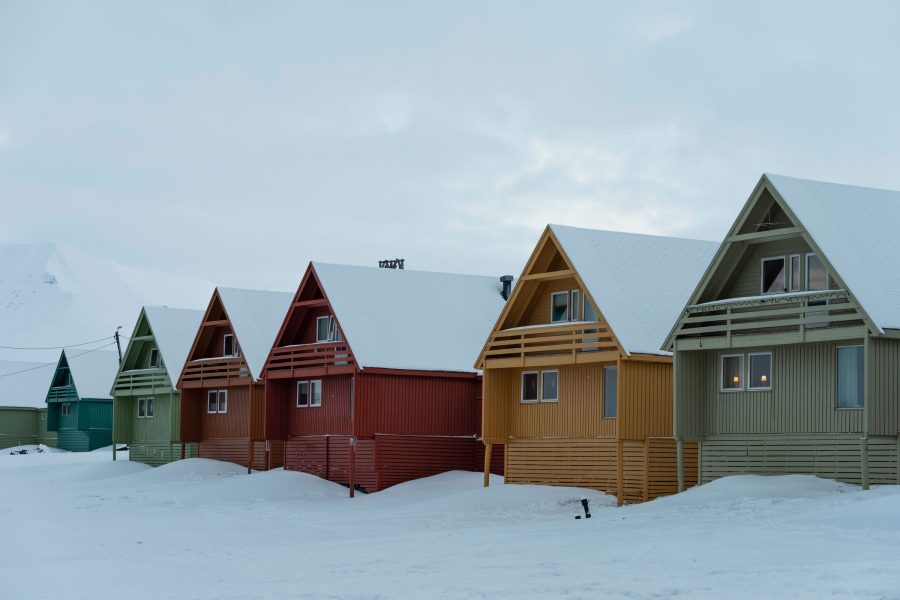
Some colorful houses in Longyearbyen on Svalbard have been at risk of damage by avalanche. Photo by Marie Nystad Helgesen
Brunvoll recalls the avalanche that claimed two lives in 2015. The community rose to the occasion to help. They dug people and homes out of the snow, they comforted one other, they made coffee. They had to.
“When things happen up here we have to resolve it ourselves because it takes a while to get help,” he says. “It was a shock to everybody.”
There’s neighborliness on a settlement scale, and it’s a model other places could follow, Klyve says. Though Longyearbyen is small, it’s committed to being a good and healthy place to live, and it’s committed to protecting itself for the future. “From shutting down coal mines to transitioning to renewable energy, we work on both large-scale changes and smaller community-driven efforts,” Klyve says. “The key is that everyone is involved, and every step matters. While we’re fortunate in Norway to have the resources for this, we hope to inspire others by showing that even small actions can create meaningful change.”
Brunvoll says there’s a certain grit people either already have or seem to develop living on Svalbard that’s not common in most places. “Even though there are a lot of challenges when it comes to nationality, geopolitics, the security situation, climate change, whatever, people still want to live here and want to make this a good place to live,” he says. And it quite simply doesn’t matter where they’re from. “What defines us is that we have chosen to live in this outpost.”

